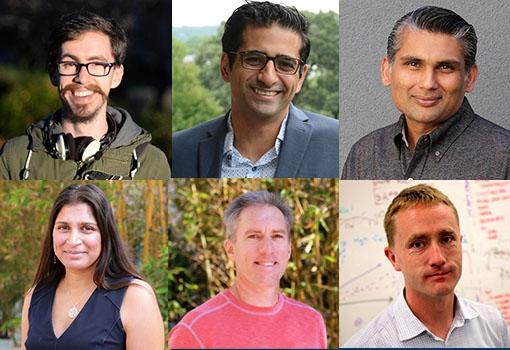Investing in Innovation

Three projects that take innovative approaches to solving critical energy-efficiency challenges have been awarded seed funding from UC Santa Barbara’s Institute for Energy Efficiency (IEE), an interdisciplinary research institute committed to improving energy efficiency. The selected projects align with at least one of the institute’s three key interdisciplinary thrusts: smart societal infrastructure, computing and communications, and the food-energy-water nexus. Each proposal will receive up to $50,000 in critical seed funding, which is intended to produce preliminary results that the scientists can use to apply for major external funding to expand their research.
“Supporting projects in the early stages of development is an essential step to the creation and delivery of high-impact solutions to improve efficiency,” said IEE director, John Bowers, a distinguished professor of electrical and computer engineering (ECE) and materials. “Each project attacks a grand challenge with a leading-edge approach that has tremendous potential. They also foster new research collaborations and leverage IEE’s legacy of scientific discovery.”
The awards bring six new faculty members from the departments of mechanical engineering, computer science, ECE, and physics to the IEE.
“The review committee was thrilled with these projects because they proposed innovative paths to discovery and enrolled new junior and senior faculty in the institute,” said Mark Abel, associate director and executive advisor of IEE. “We also saw how seed funding could really help these faculty move their new efforts forward, and how the research, if successful, could lead to additional funding opportunities.”
The selected projects are aimed at developing novel technologies, ranging from new computer hardware to a probabilistic computer, to an energy harvester that powers portable and remote smart devices.
Miniature Energy Harvesters
The Internet of Things (IoT) is a giant network of connected devices, all of which collect and share data about the way they are used and their environment. The “smart” devices that make up the IoT have sensors to collect the data that make it possible to light a room or heat a home with greater energy efficiency. The sensors require power to operate, and batteries are often used to power portable devices. However, batteries’ weight, limited energy storage capacity, and short lifespans have sparked a push for zero-power technologies with energy autonomy, specifically ones capable of harvesting and storing energy from their surrounding environments. To date, most of the work on portable power applications in the field has involved optimizing existing technologies, and relatively few fundamentally new ideas have been explored. But now, an interdisciplinary team of UCSB researchers, comprising mechanical engineering professors Sumita Pennathur and Carl Meinhart, and physics associate professor David Weld, has received seed funding to begin developing a device that generates electrostatic energy from mechanical power sources, such as vibrations.
“We proposed a novel device that will harvest energy through pressures and vibrations from the surrounding environment, thereby eliminating the power requirements of batteries in portable and/or remote IoT devices,” said Pennathur, an elected fellow of the American Institute for Medical and Biological Engineers (AIMBE) and recipient of the prestigious Presidential Early Career Award in Science and Engineering (PECASE).
Their novel energy harvester is called LIMMPET, which stands for Liquid-Metal Microfluidic Portable Energy Transducer. The device uses a multiphase system composed of droplets of liquid mercury surrounded by insulating oil to exploit, through a clever microfluidic geometry, the electrostatic induction between adjacent metal droplets. The geometry consists of a system of external electrodes that allow the team to collect and amplify the induced charge.
Prior to applying for the grant, Pennathur and Weld designed a prototype, and their initial results showed that the power produced was less than the theoretical maximum. By adding Meinhart, who specializes in designing simulation techniques to understand the physics of transport phenomena at the micro- and nanoscales, Pennathur believes they can make the necessary adjustments to realize the full promise of this new technology.
“Professor Weld came up with the idea to miniaturize a Wimshurst machine, which harvests mechanical energy and transforms it into electrical power that can be used to power IoTs,” explains Pennathur. “My lab provided the microfluidic expertise needed to go from concept to implementation. Professor Meinhart is an expert in COMSOL modeling, and his contribution will help tease out the physical principles behind the LIMMPET and allow us to optimize the device. Our complementary skills and expertise make this a true and ideal collaboration.”
Through the seedling project, they hope to develop and validate a model to guide changes to the channel geometry and understand all of the mechanisms and device configurations that yield maximum power efficiency. The results could not only show the feasibility of a novel pressure-powered energy harvester, but also provide enough initial data to pursue larger sources of funding to expand their program
“If our project is successful, LIMMPET can be a huge step in miniature energy harvester technology,” said Pennathur. “That means we can have remote IoTs all over the place, without the need for batteries or grid power. What is even more exciting is that we propose a completely novel technology to generate ‘clean’ energy.”